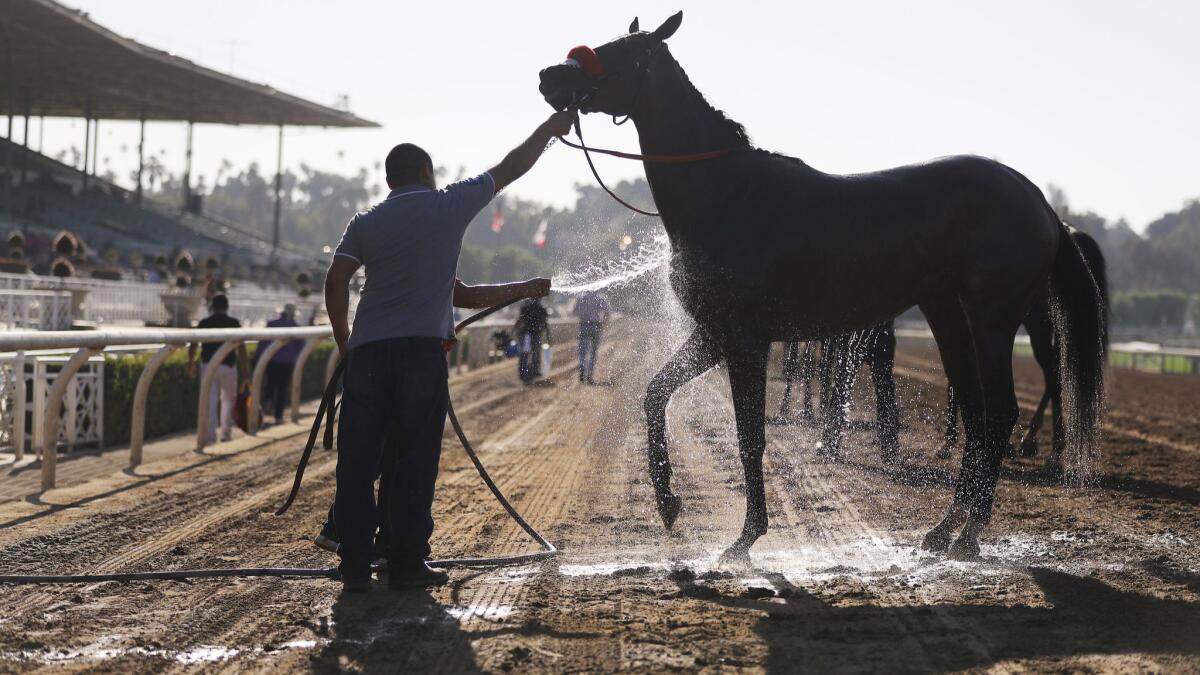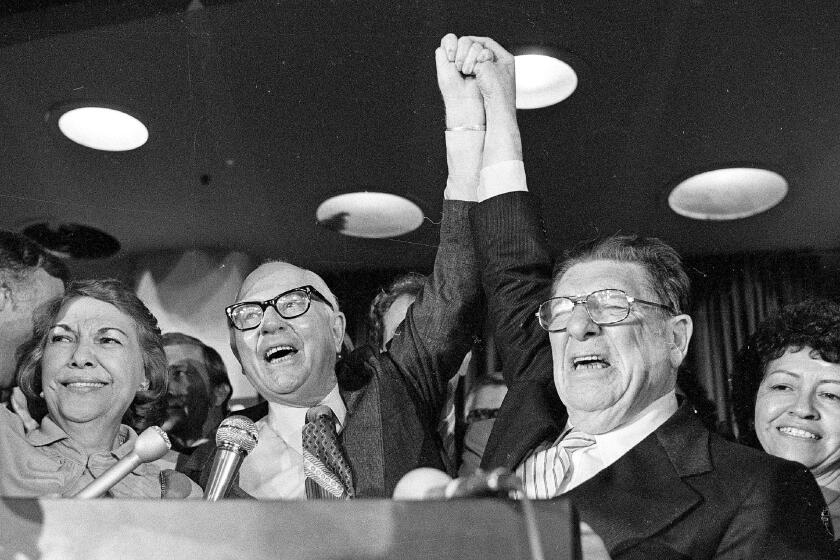Opinión: After 30 dead horses, thank heavens Santa Anita’s lethal season is finally over

- Share via
The grisly winter racing season at Santa Anita finally, mercifully, came to a close Sunday, with 30 horses dead from racing or training. The latest death was just two days ago. And, although racing has closed at the park until late September, training will continue until July 11. A good number of those 30 deaths occurred during training. It’s disconcerting to think that horses will continue even to be trained there.
The number of unexplained equine deaths is big enough to justify the spotlight on Santa Anita. However, the disturbing number of deaths at other tracks justifies reevaluating the entire sport. Do we want to have a sport that last year killed 493 thoroughbreds in racing on U.S. tracks? Yes, that’s a small fraction of the 49,000 horses total that raced — but this is not a sport intended to kill horses. This is not dog fighting (which is illegal to operate or even watch in the United States).
Two weeks ago, after the 28th death, the California Horse Racing Board asked the owners of Santa Anita to stop racing, pending an investigation and the release of information on the necropsies of the horses already euthanized. The Santa Anita Park owners refused, saying they had put plenty of reforms into effect that were working, Indeed, the Santa Anita owners put in place groundbreaking reforms on which drugs could be used and when they could be administered, on trainers, on when horses needed to be registered for races, on jockeys and when they could use their crops to whip horses.
Those reforms didn’t save two more horses from dying — one the day after the racing board requested the park suspend racing, and the second on Saturday. If Santa Anita had just stopped racing a mere two weeks before the end of the season, two more horses would not have died. It’s shameful that the owners did not stop.
Yet in the calculus of the horse racing business, where billions of dollars are being wagered, those are lamentable but acceptable deaths. Reforms are in place, more veterinarians are on hand and the groomers lavish loving care on the horses. When the 30th horse, American Currency, died on Saturday while training, Santa Anita officials moved to expel its trainer — Hall of Famer Jerry Hollendorfer — from the track, telling the L.A. Times’ John Cherwa that the trainer “does not match the level of safety and accountability we demand.”
That horse was the fourth of Hollendorfer’s to die during this winter racing season at Santa Anita, and he needed to go. In fact, he also trained Psychedelicat, the first horse to die racing or training at Santa Anita this season. (His horse that died Saturday had been pulled from a race last weekend by a veterinarian.) The fact that another track, Los Alamitos, has not only welcomed him and his horses but also defended him shows how little the deaths of horses matter at many of these tracks.
The point about Santa Anita is that with all these reforms, horses have continued to die at this park. That doesn’t mean that Santa Anita was wrong to adopt the reforms. They were a good idea, but they may not have been enough.
Here are the key issues that racing regulators, Californians and all Americans need to confront: Can the sport be regulated effectively enough to dramatically reduce the death toll? And do we really want to have a sport where the expected collateral damage is hundreds of dead horses? Because that’s the reality of this sport at the moment: Even when restrictions on drugs and training are put into place, horses die regularly.
Is that something we want to tolerate?
More to Read
A cure for the common opinion
Get thought-provoking perspectives with our weekly newsletter.
You may occasionally receive promotional content from the Los Angeles Times.











